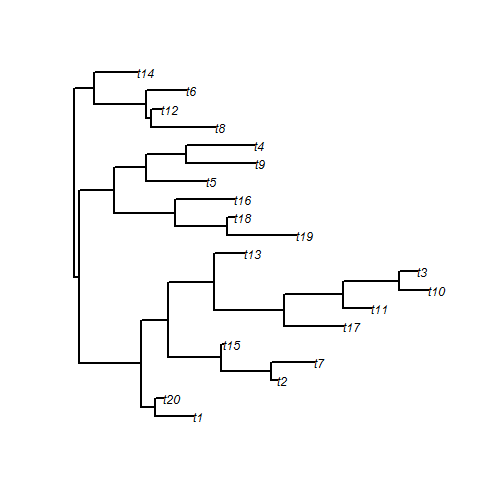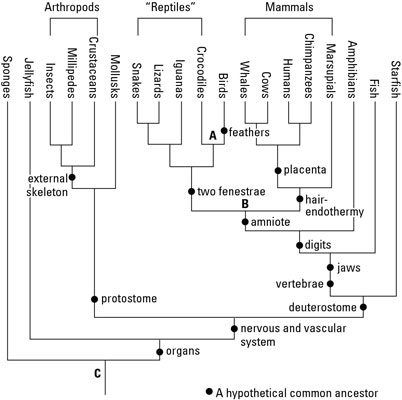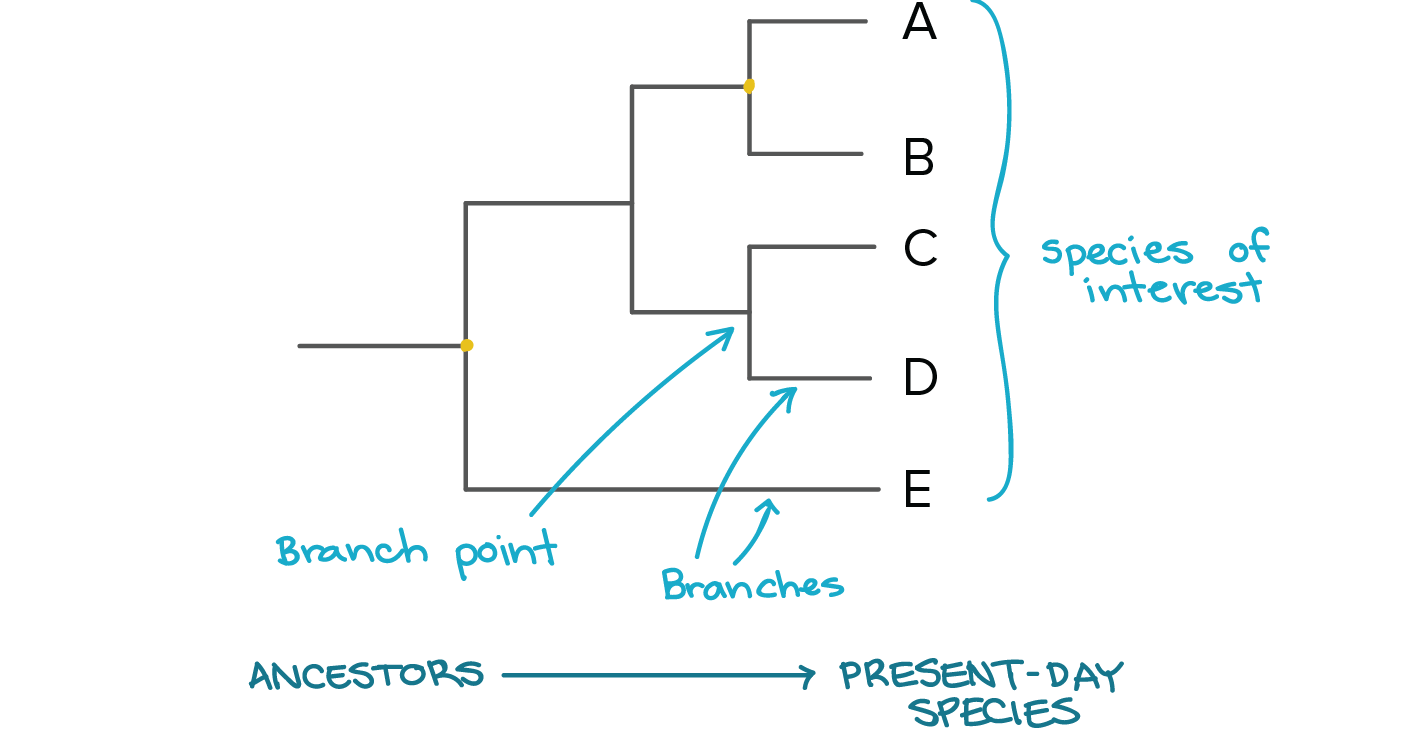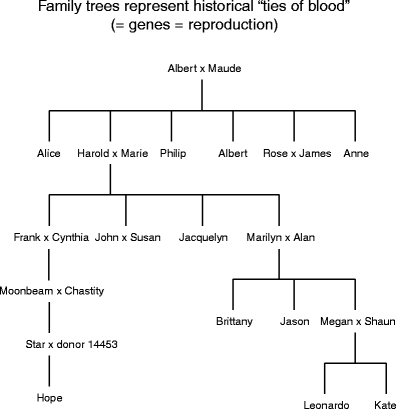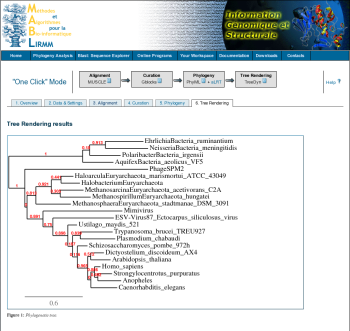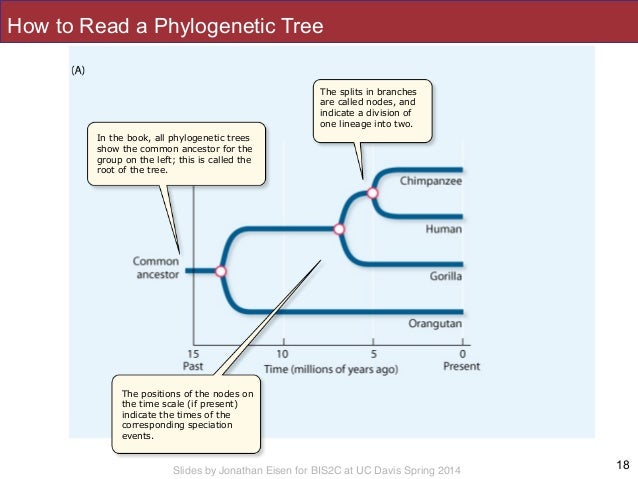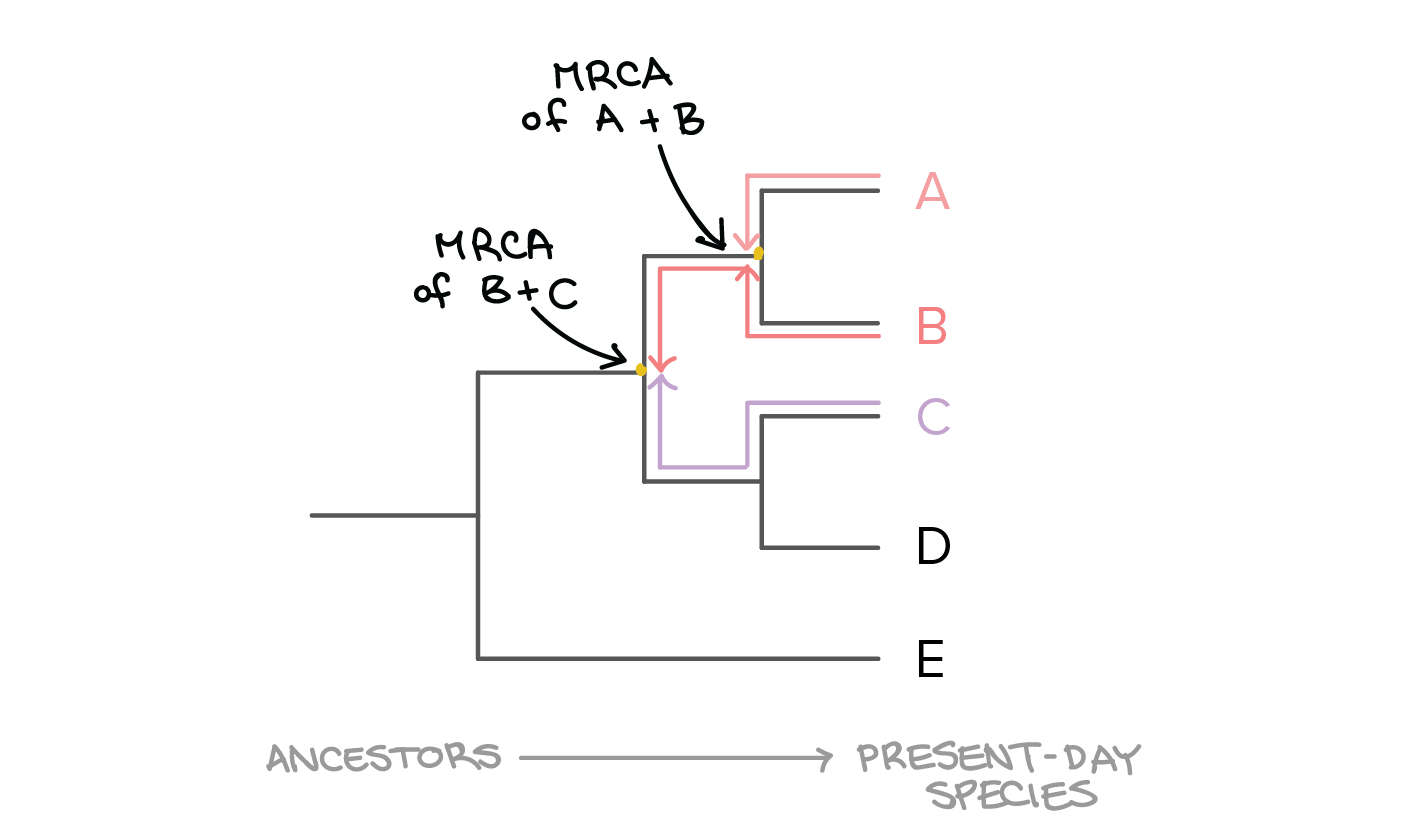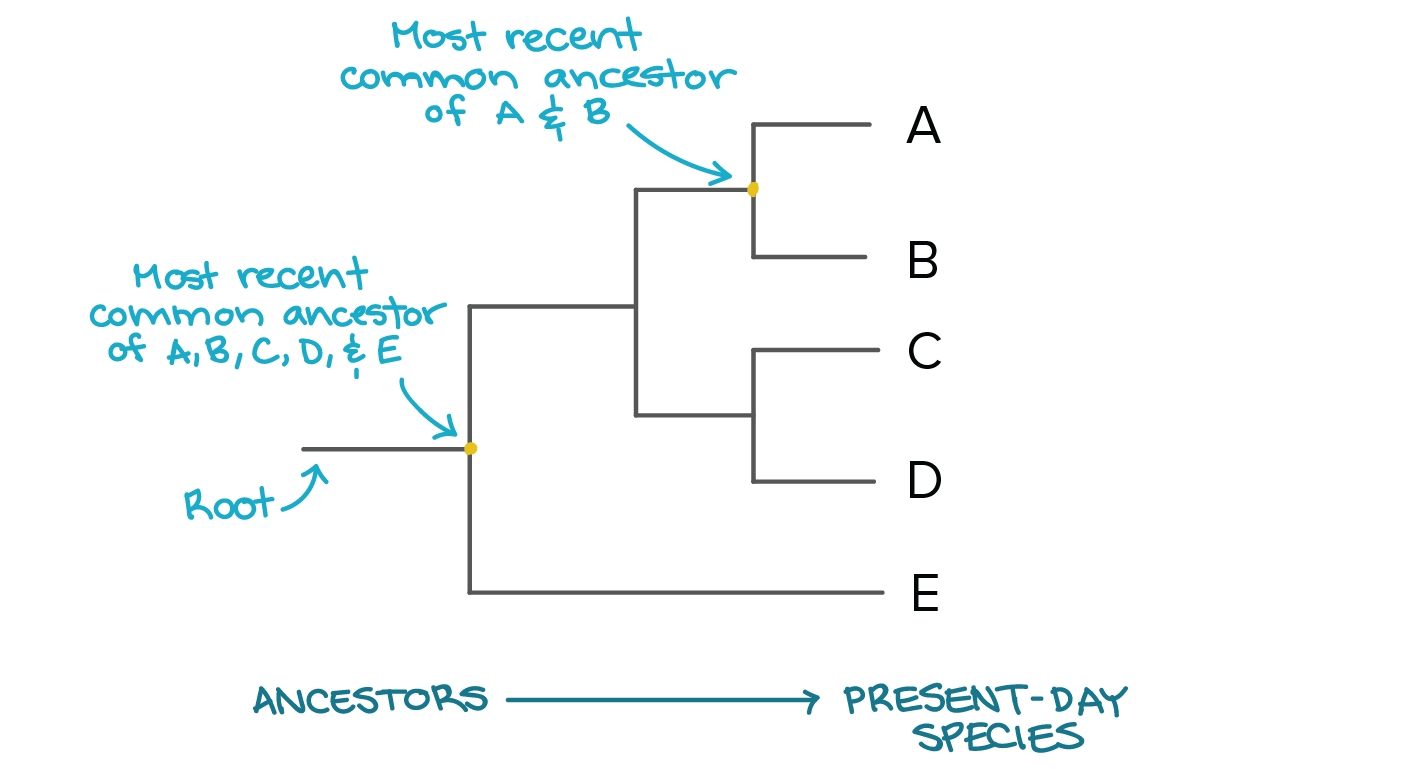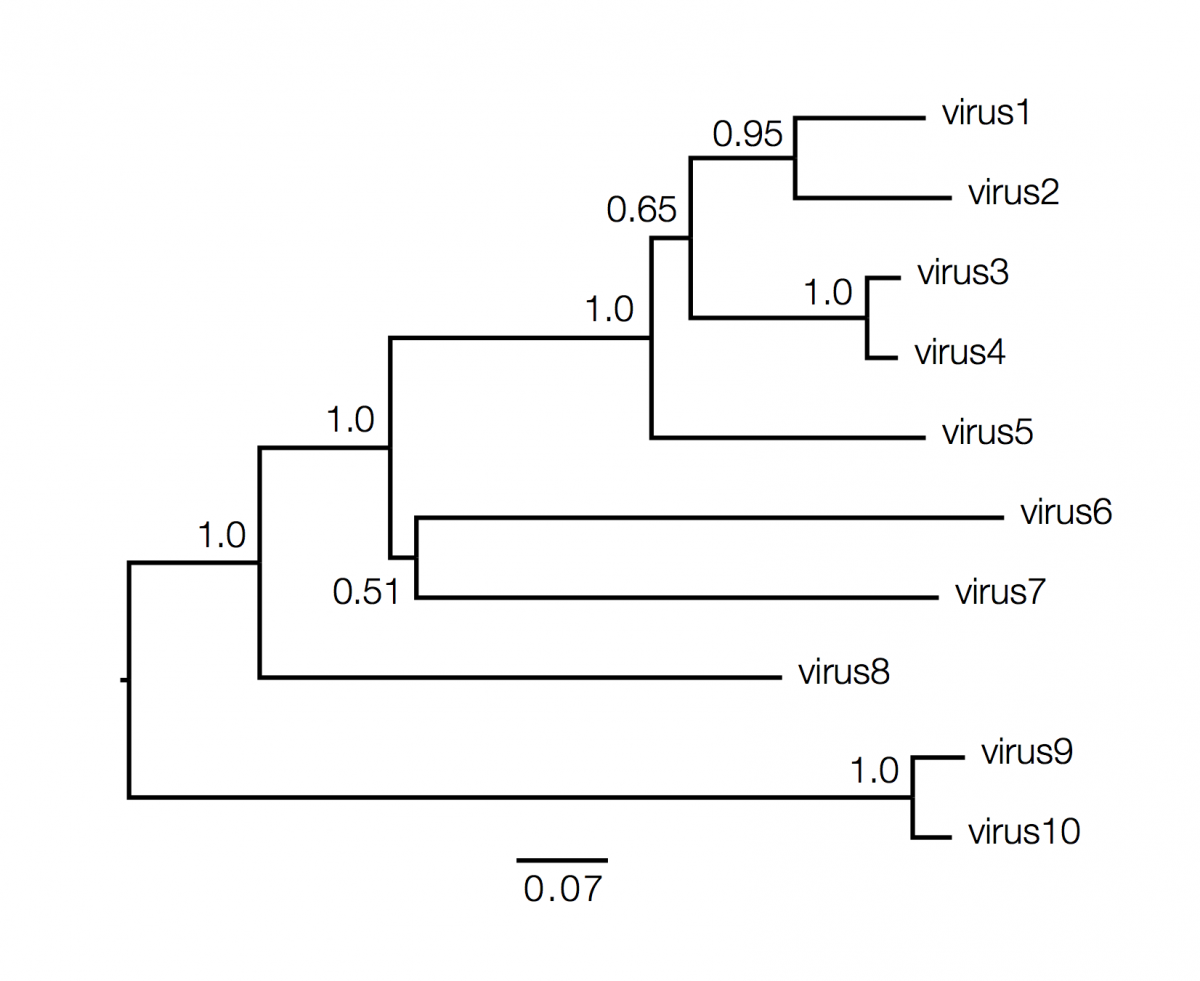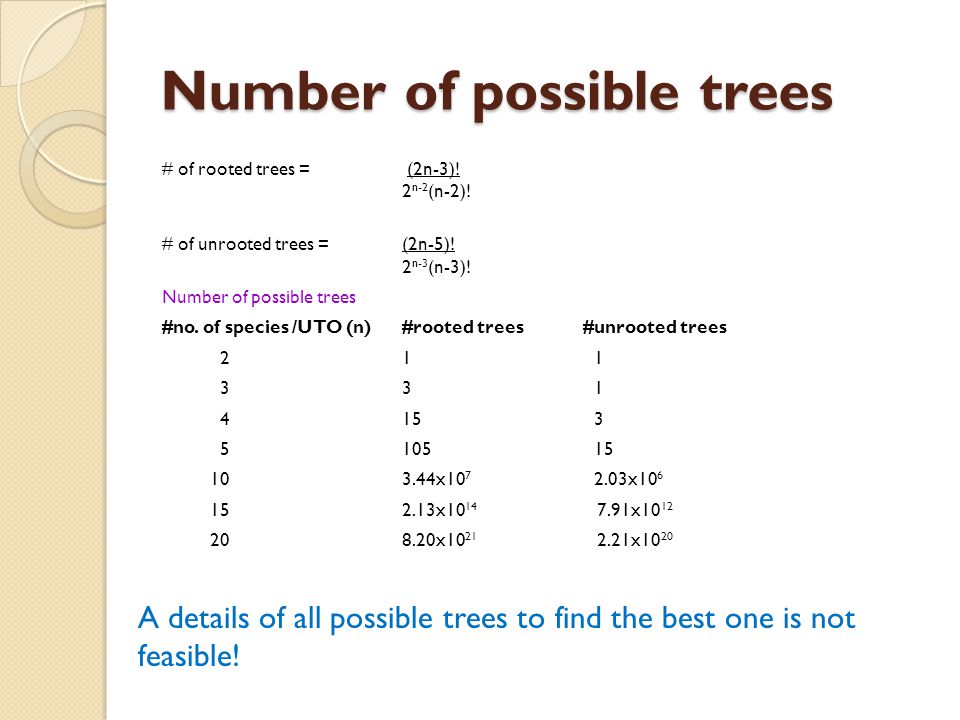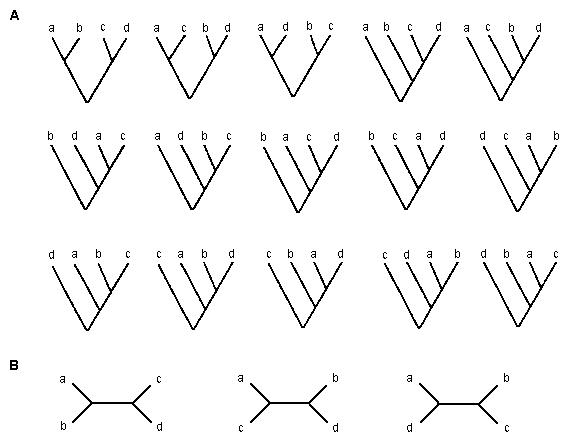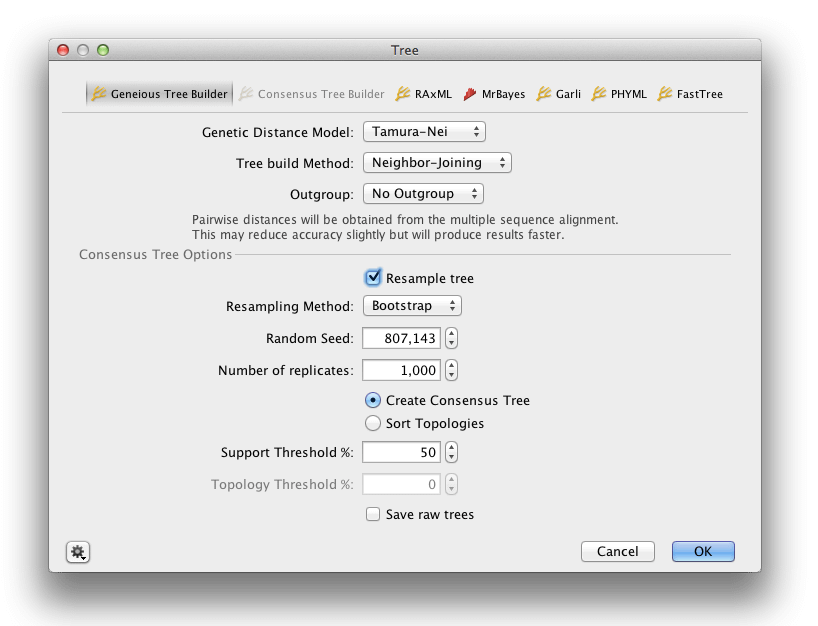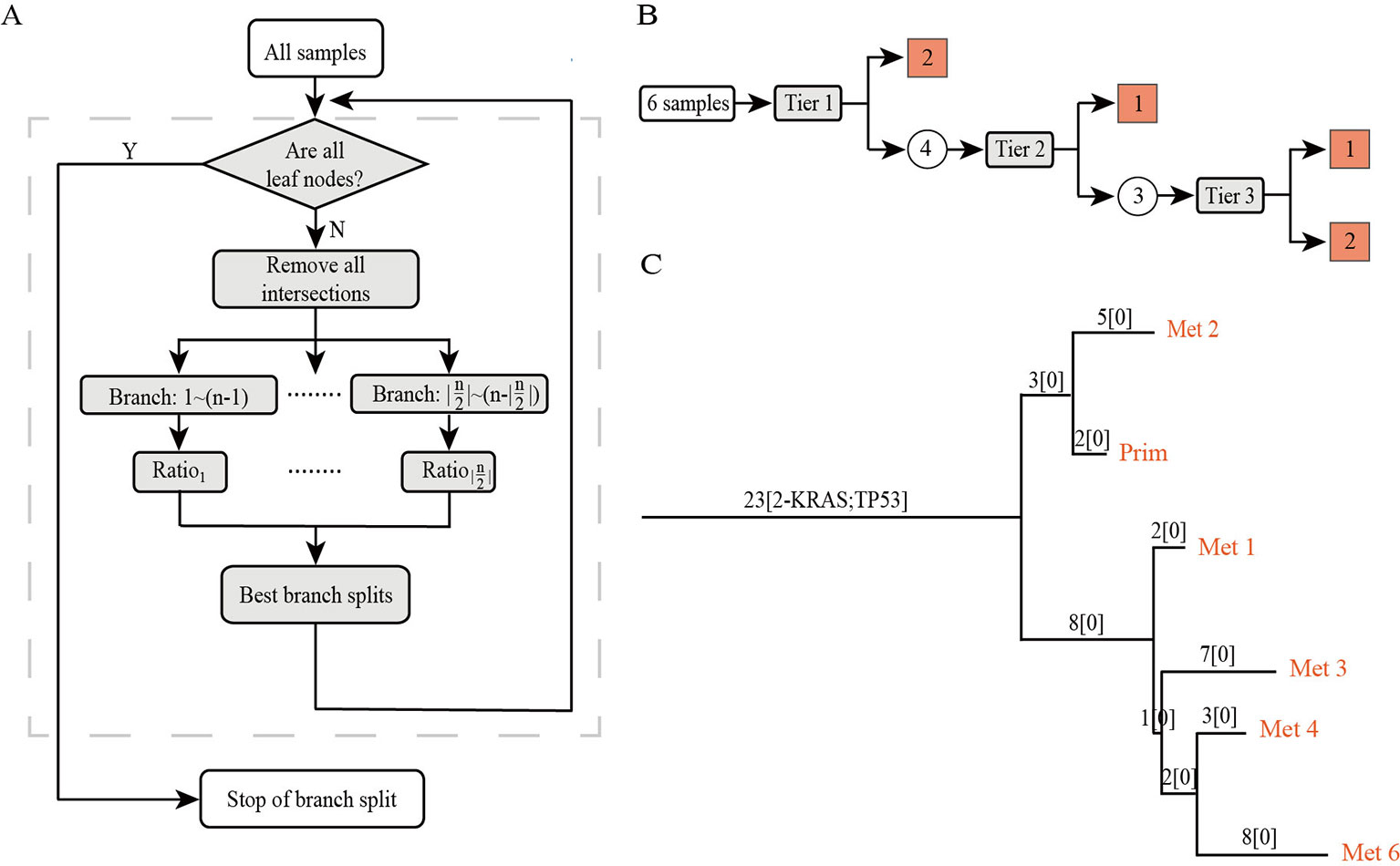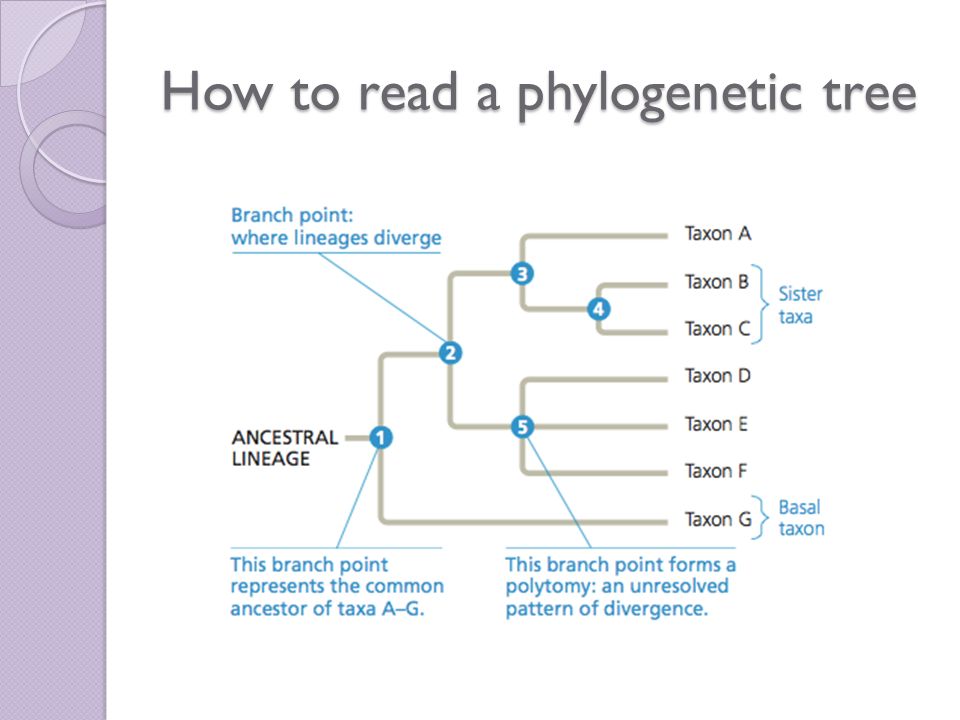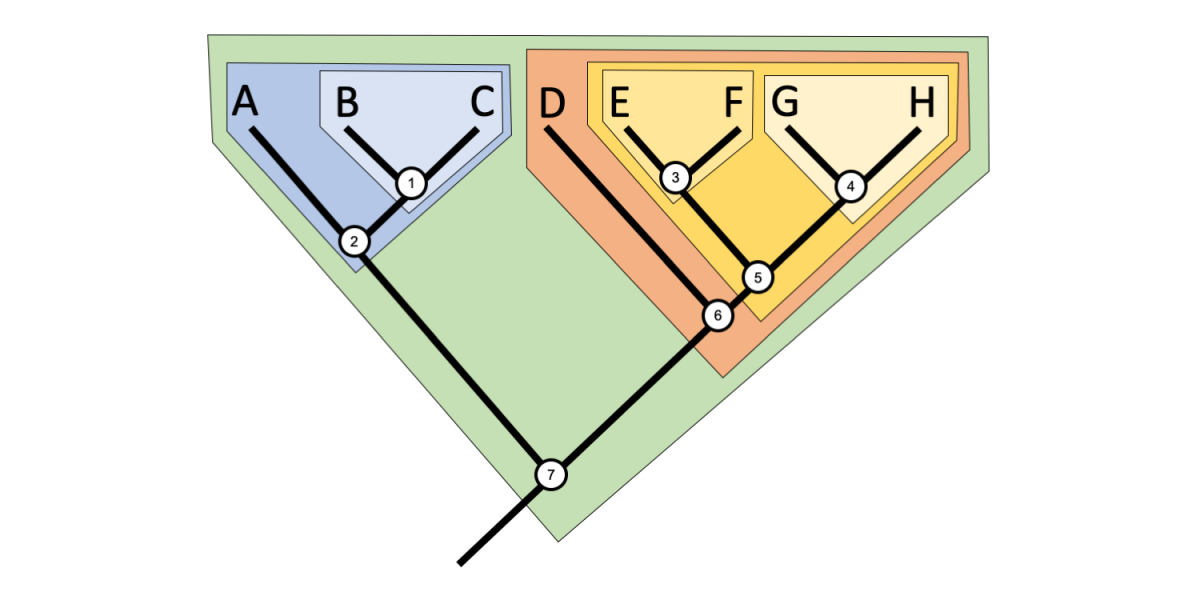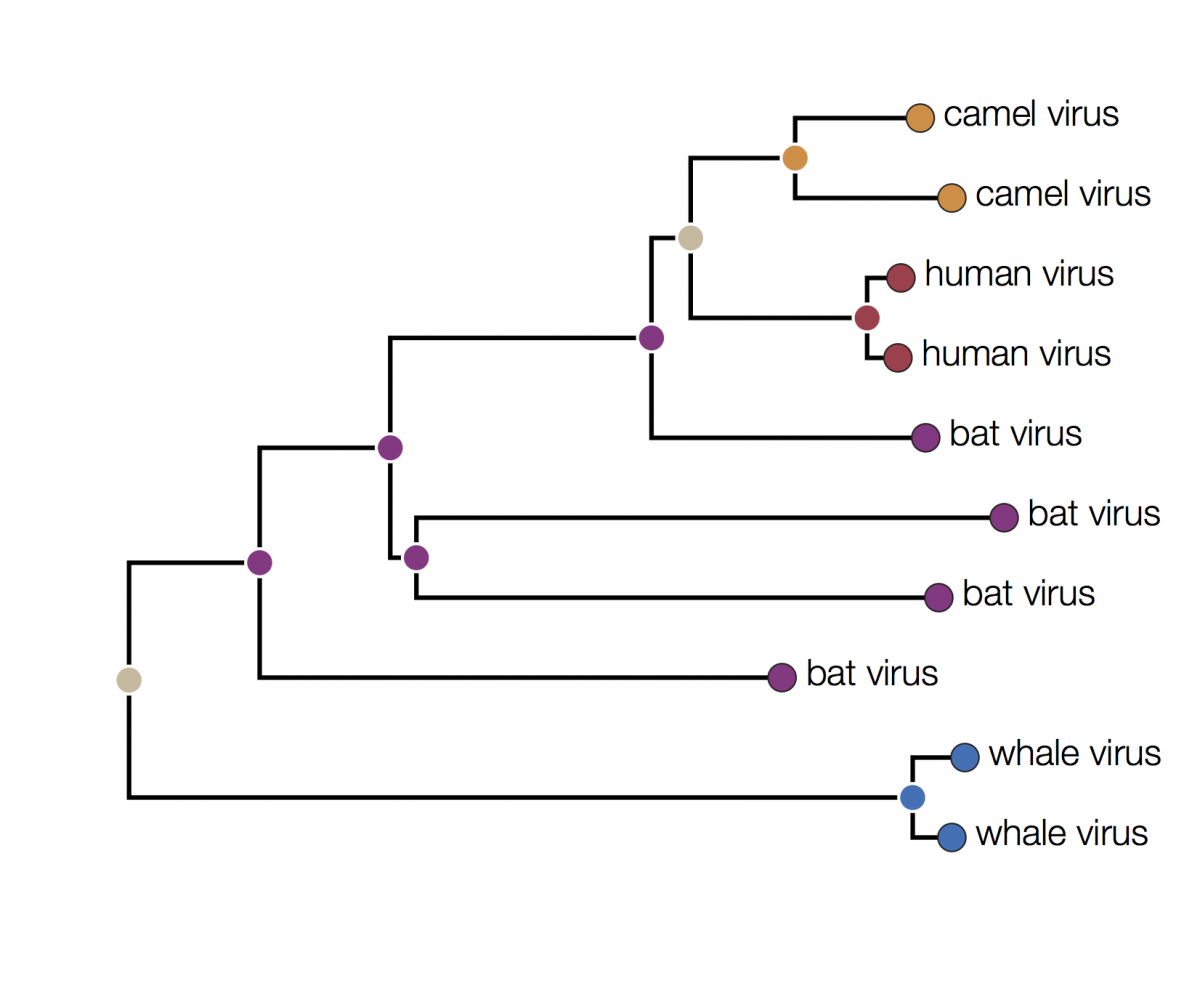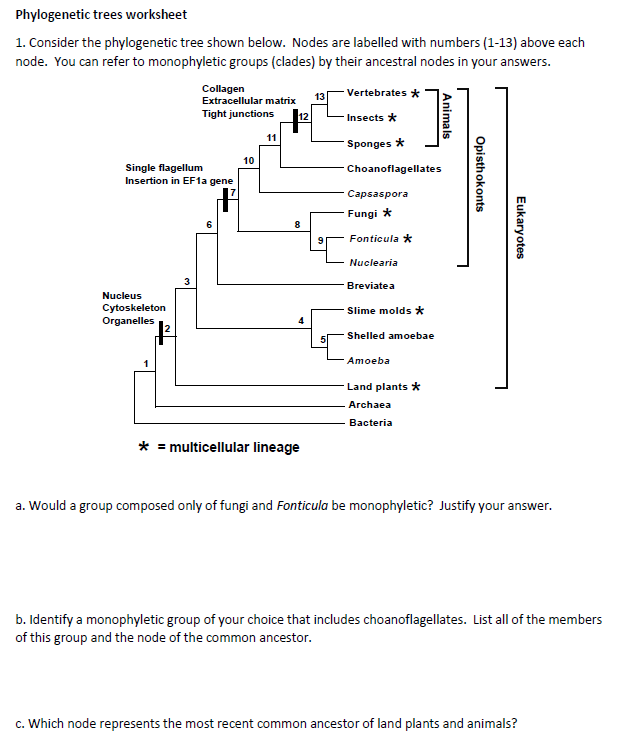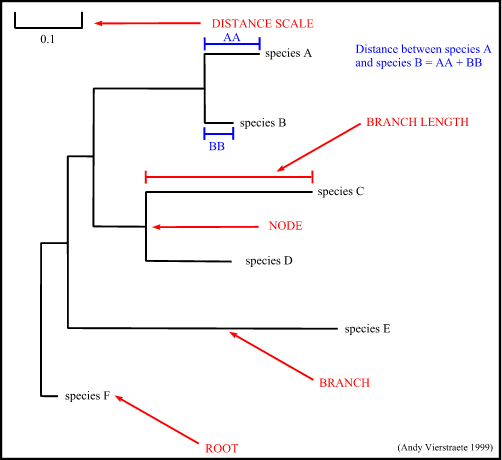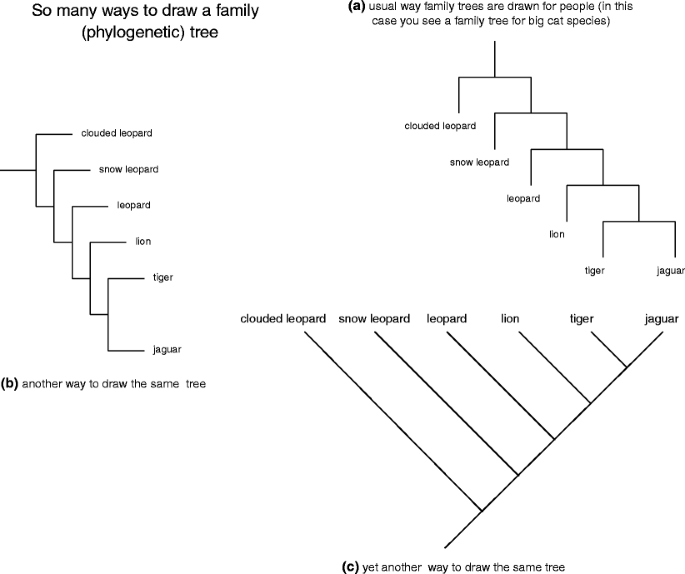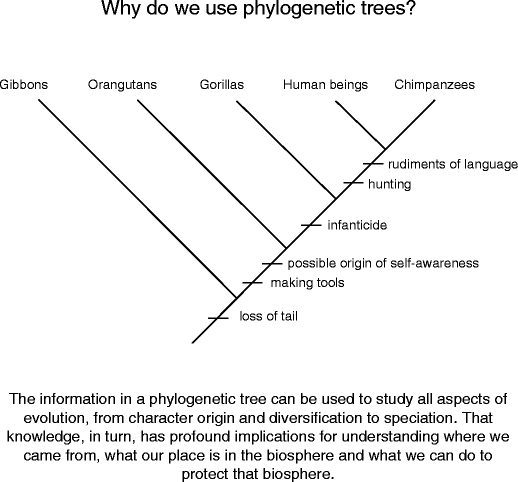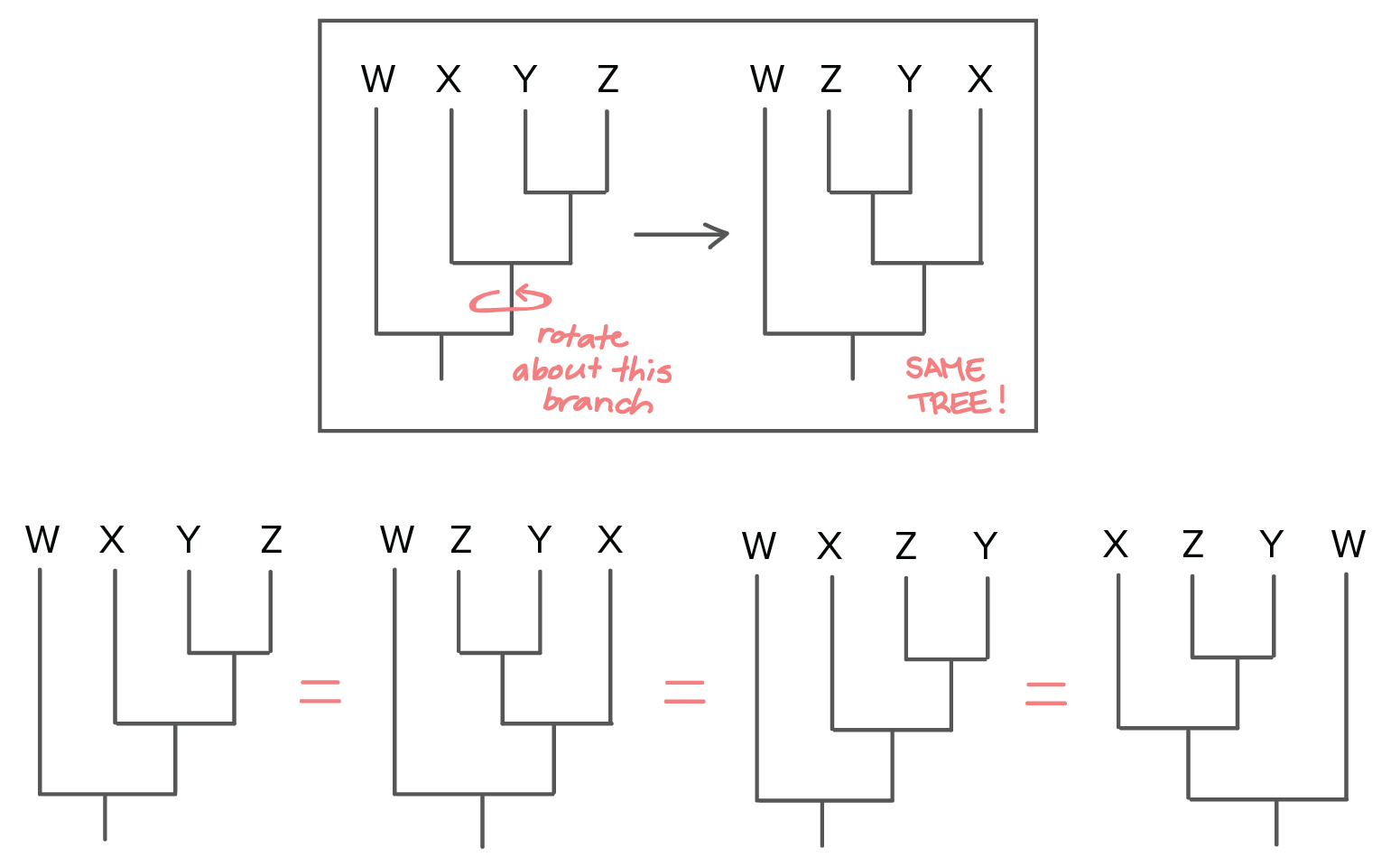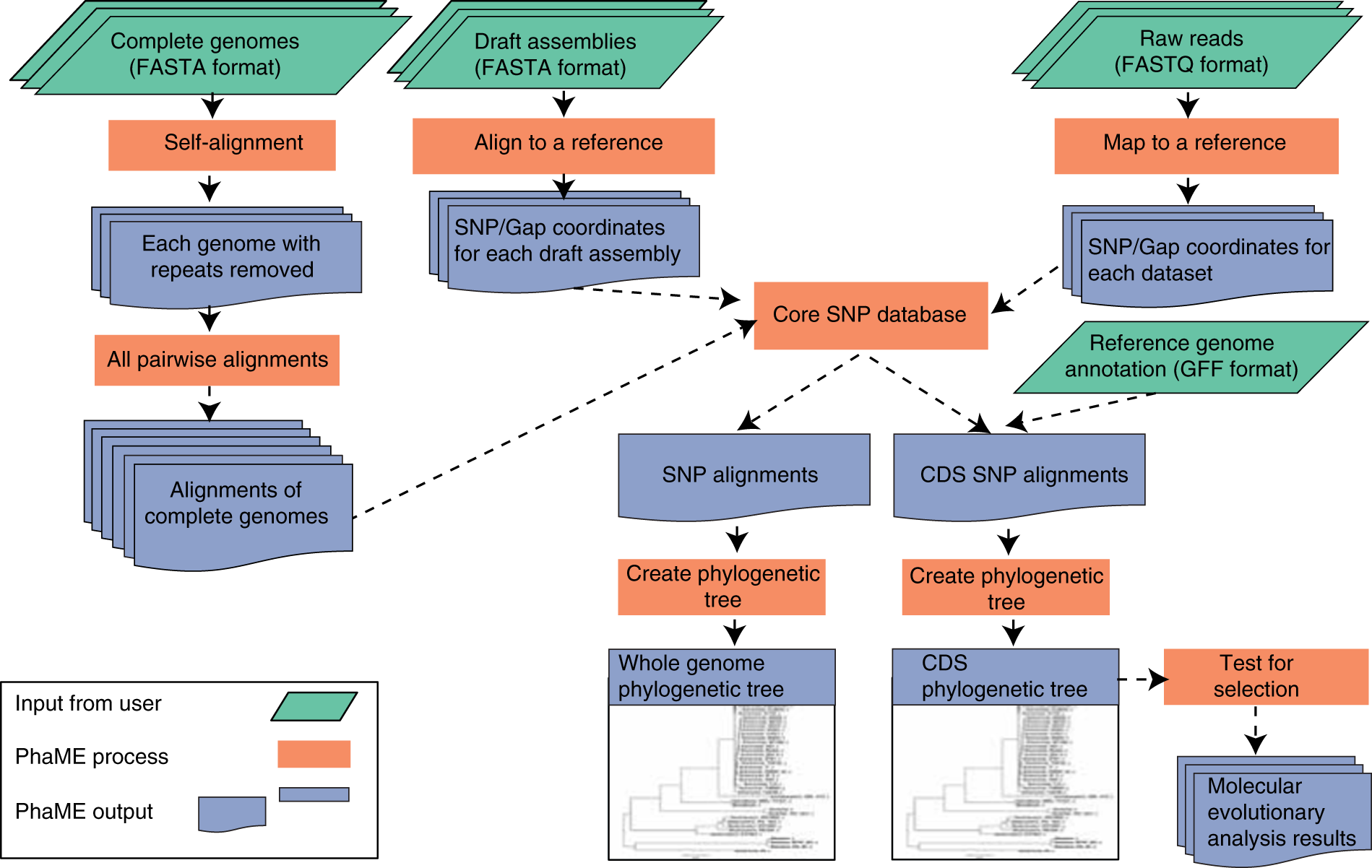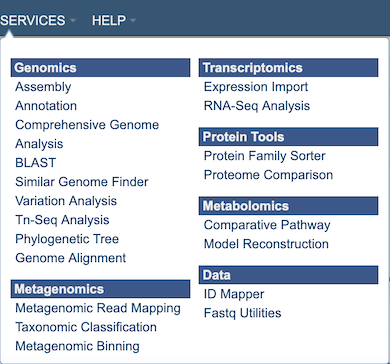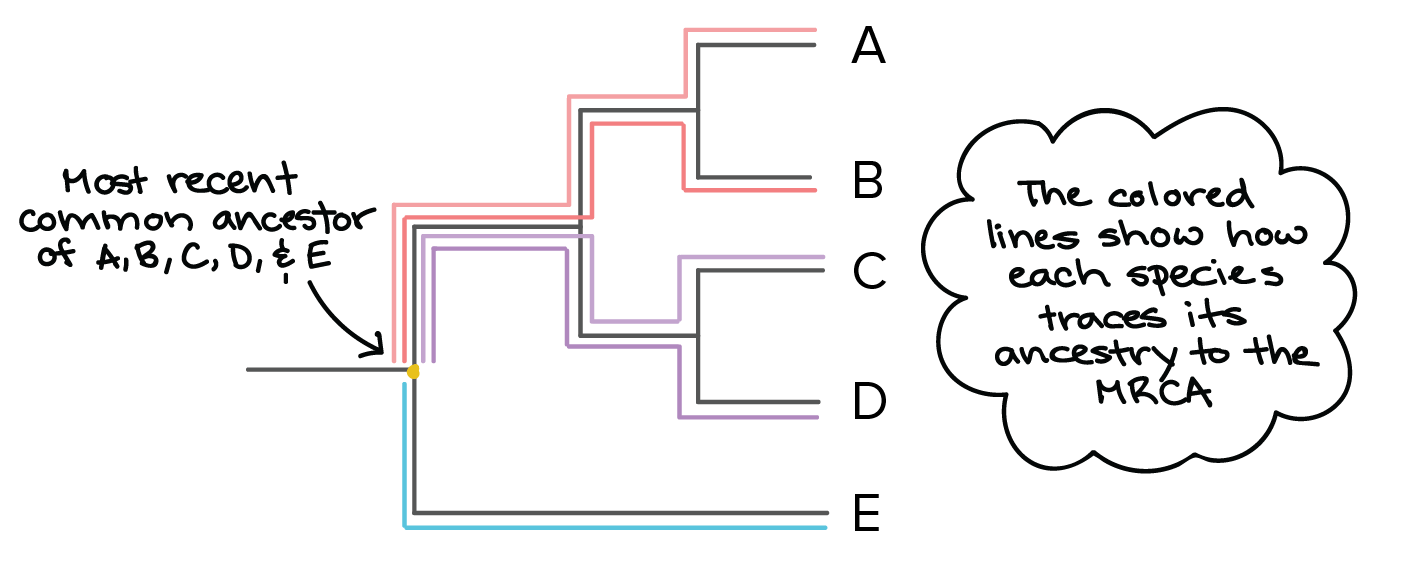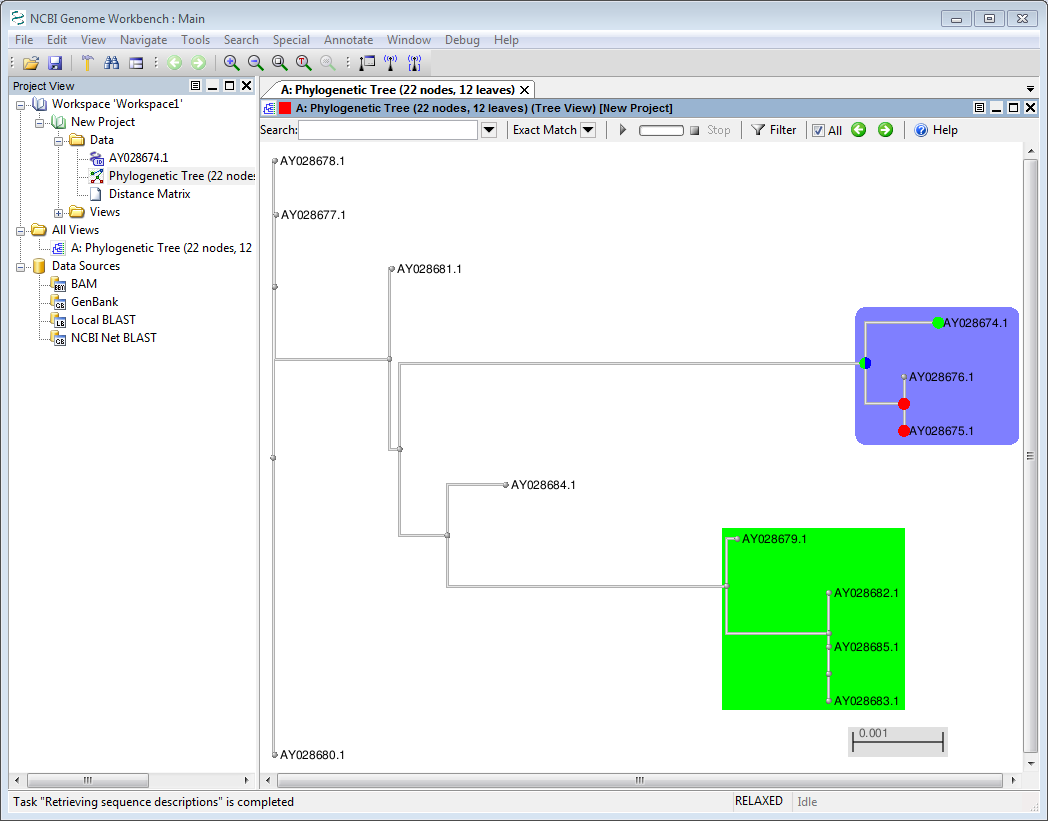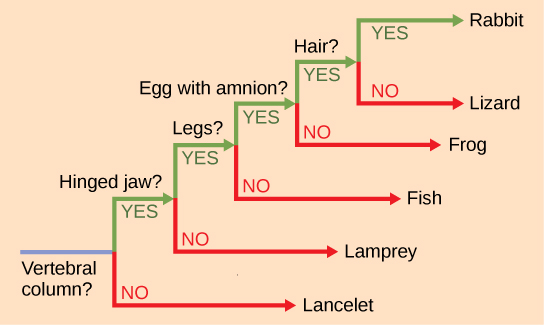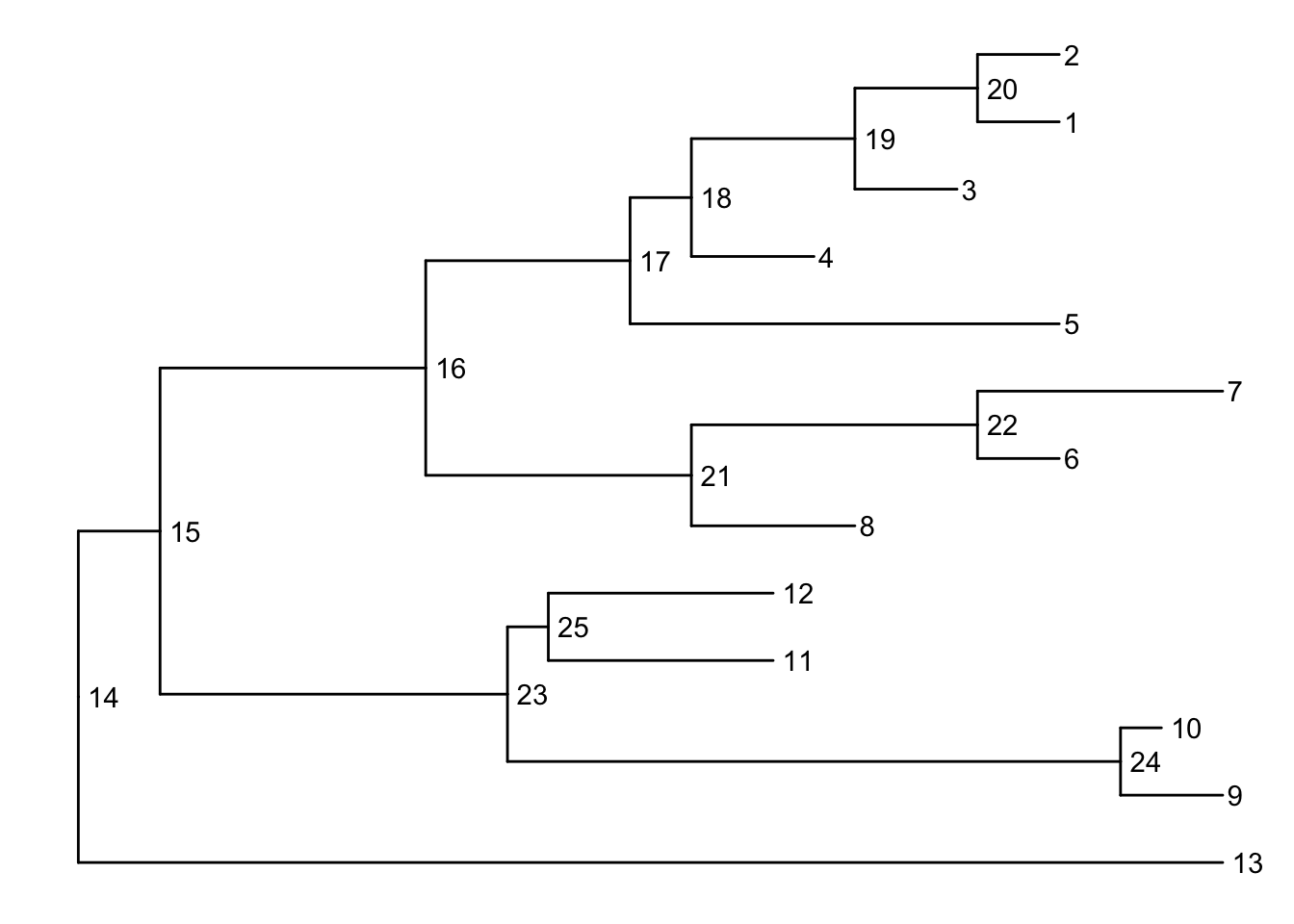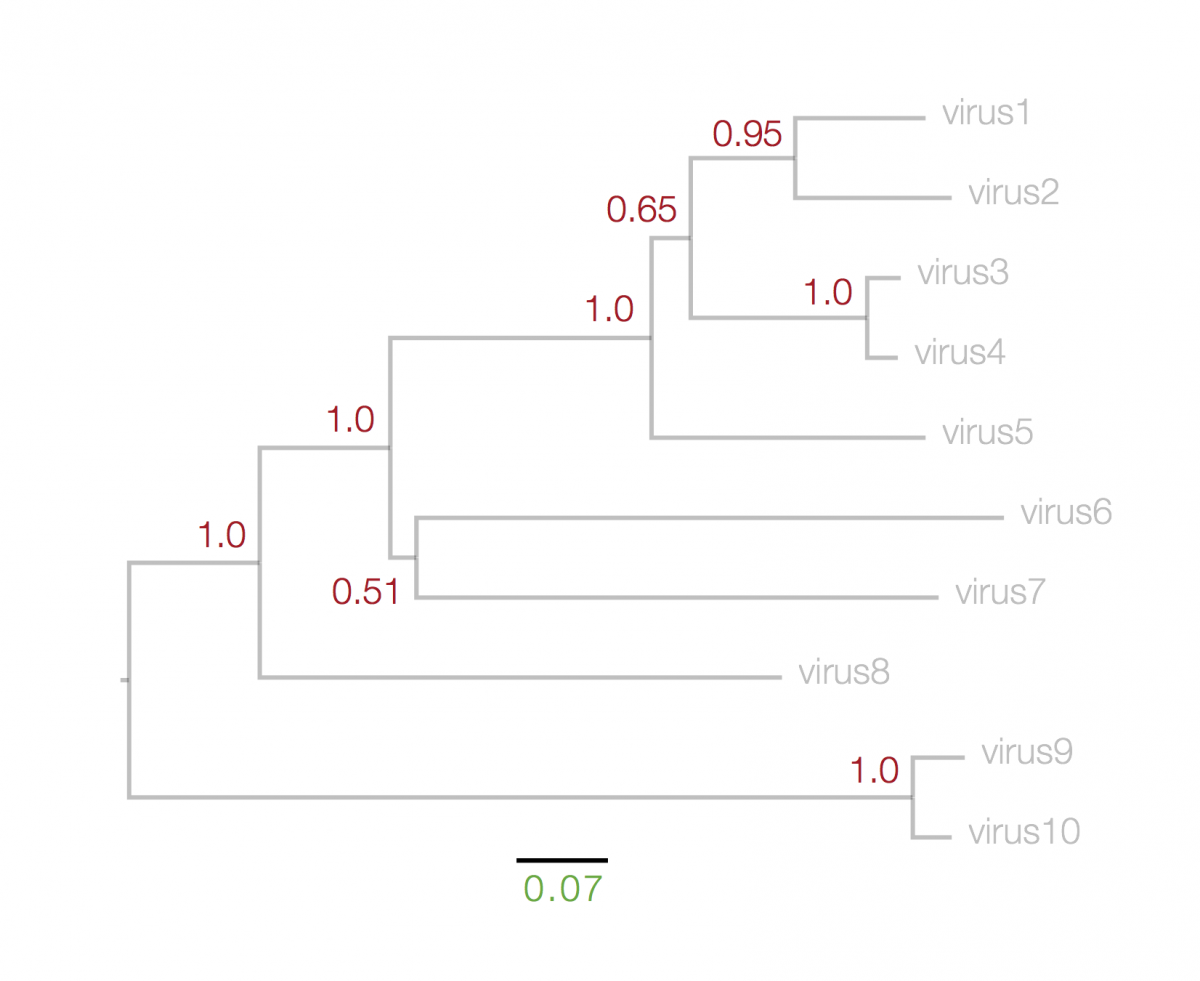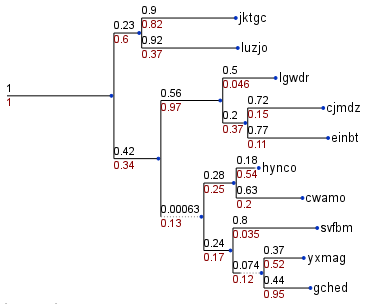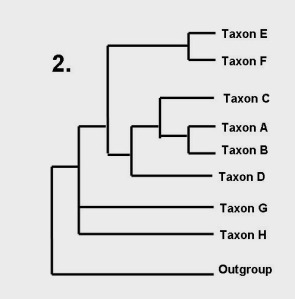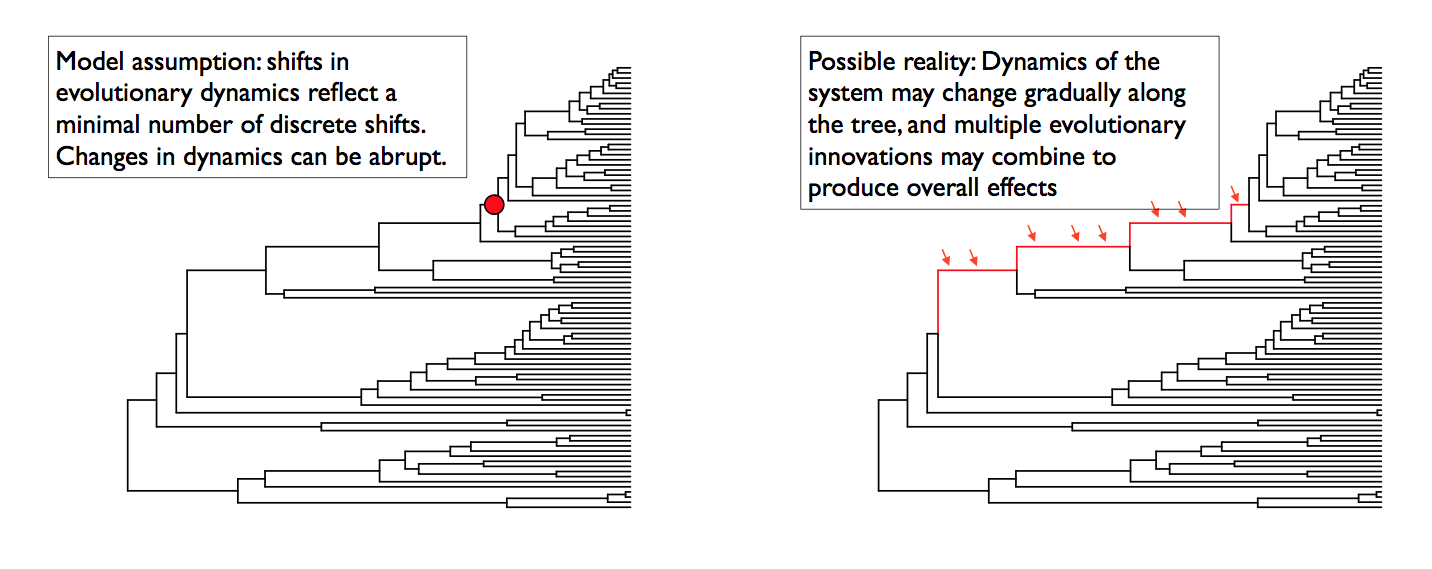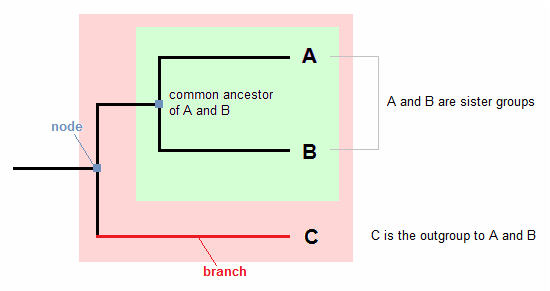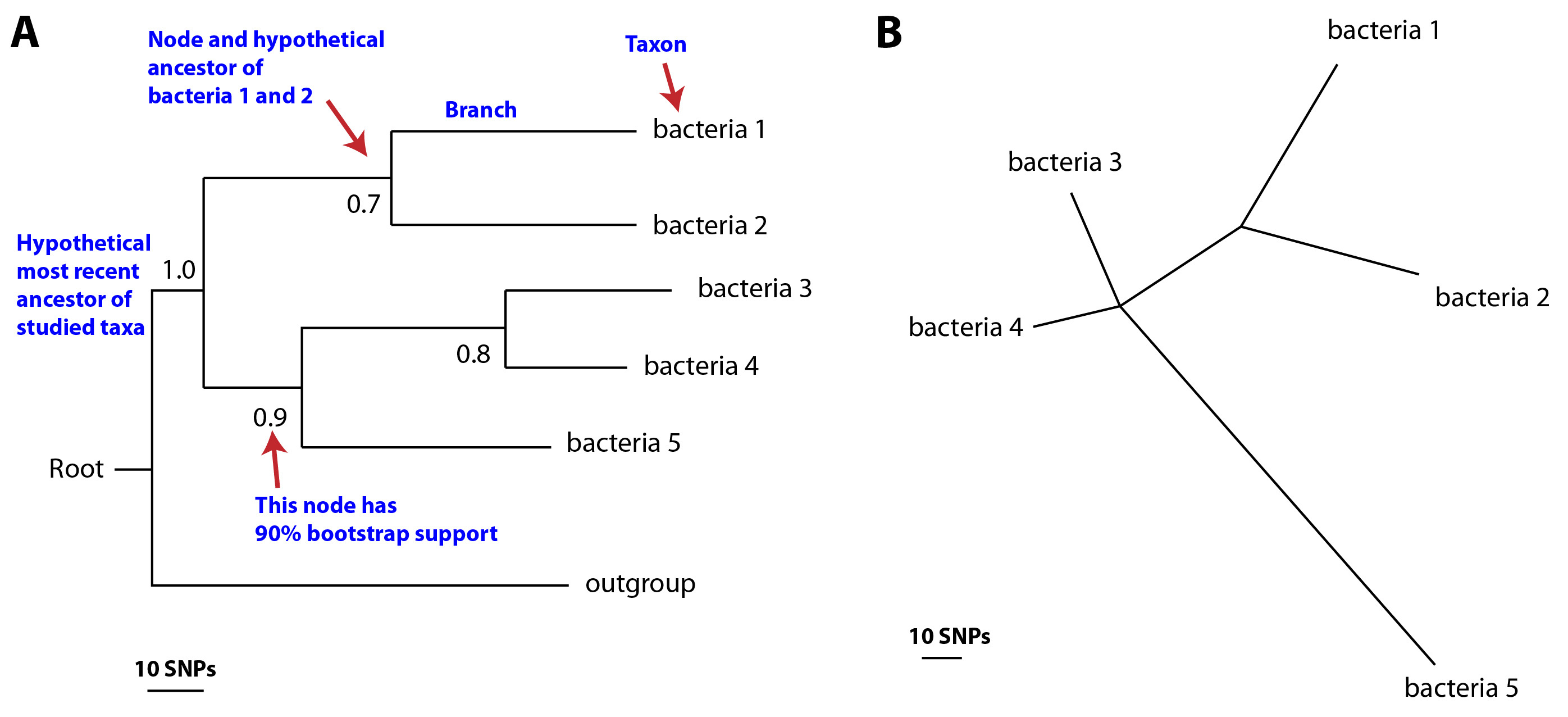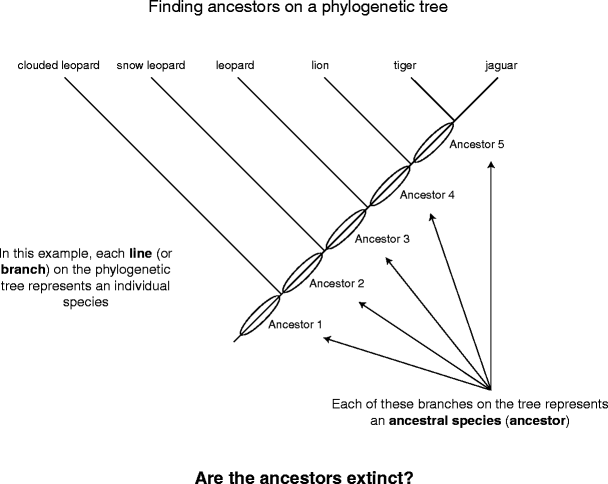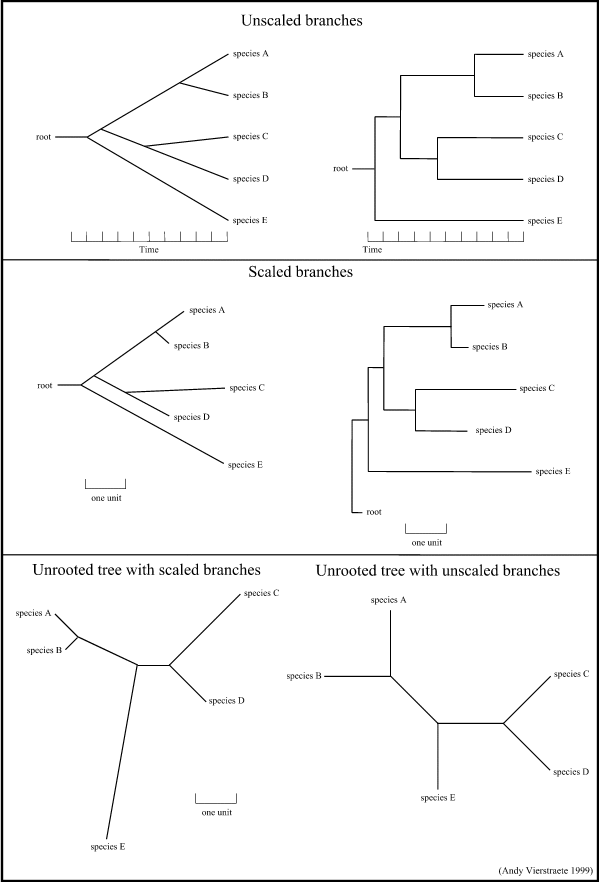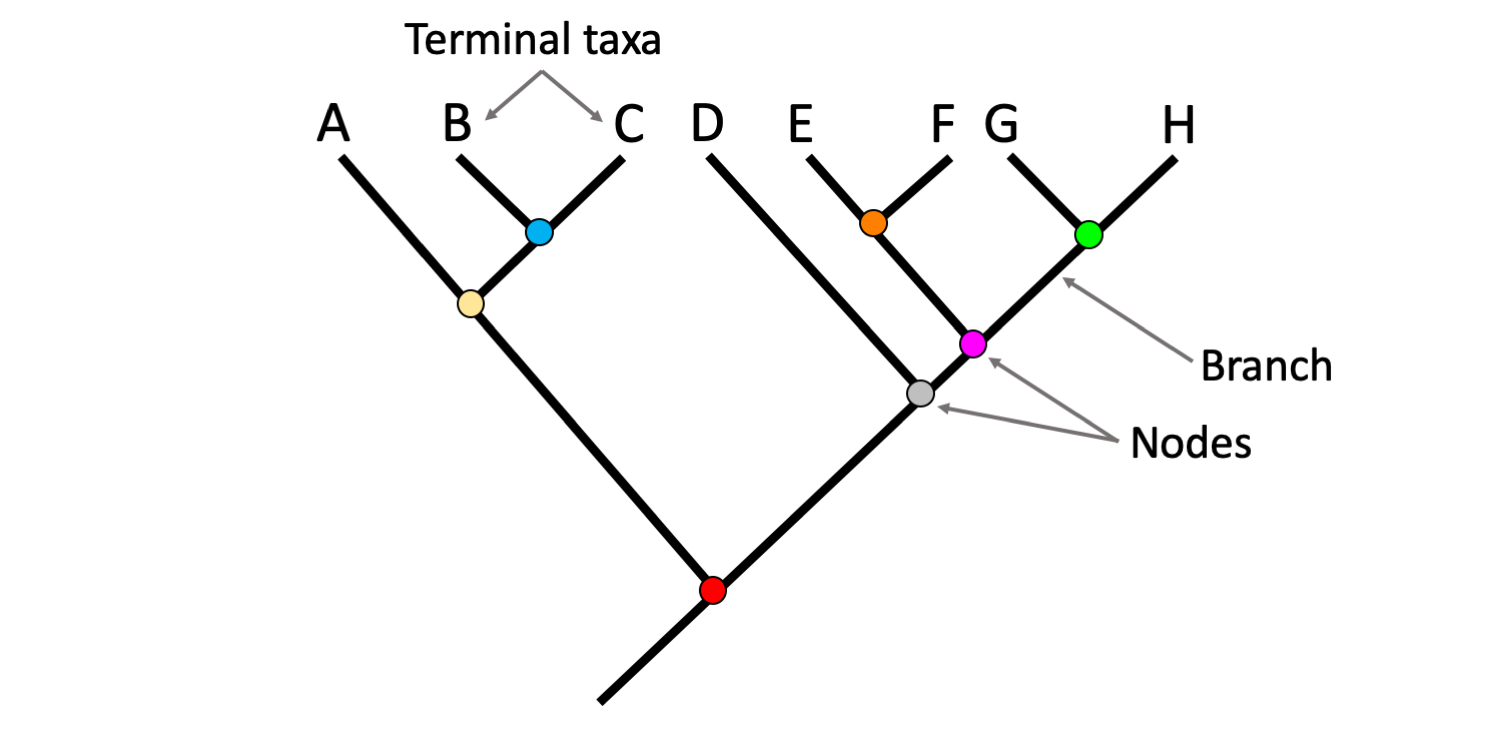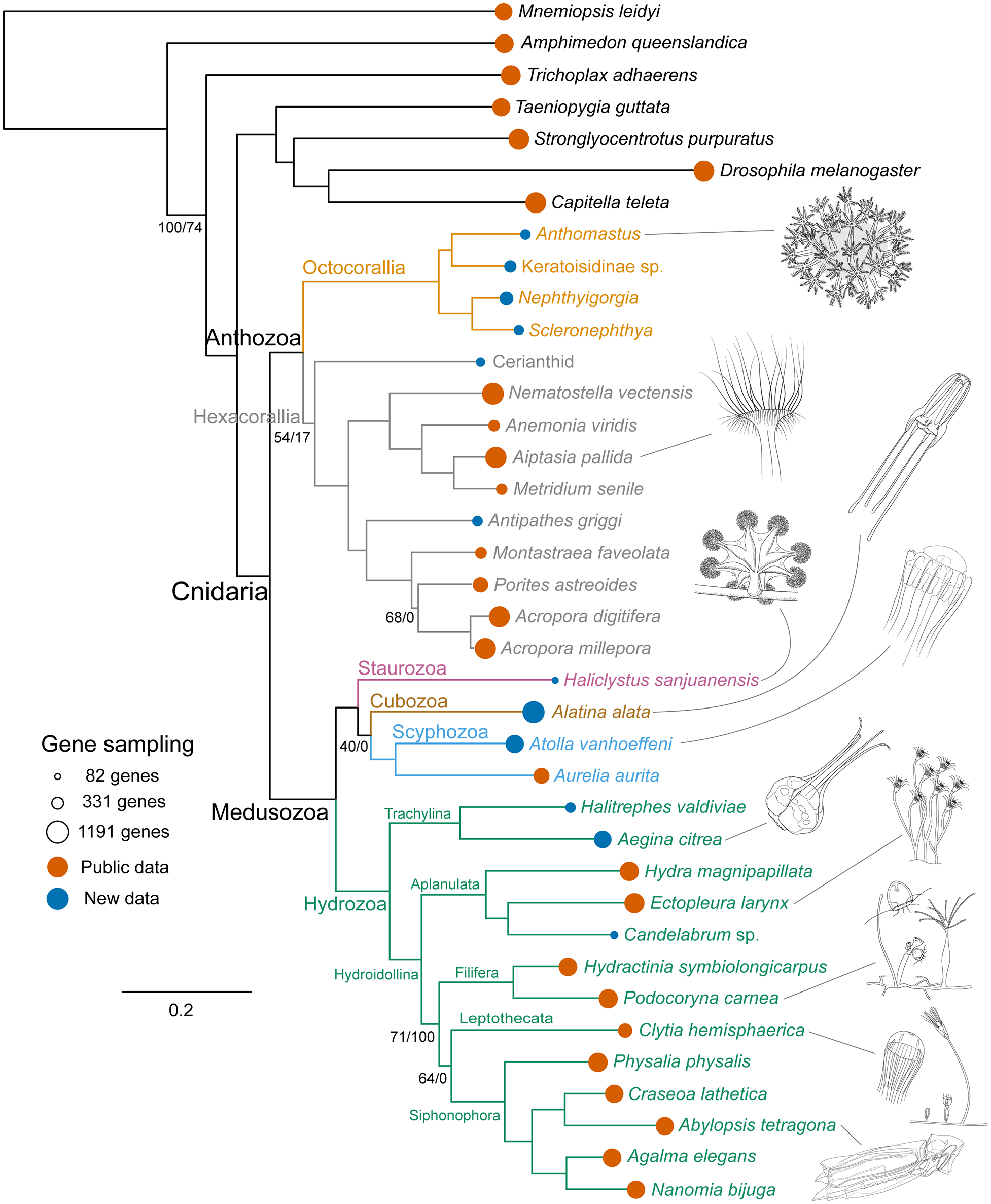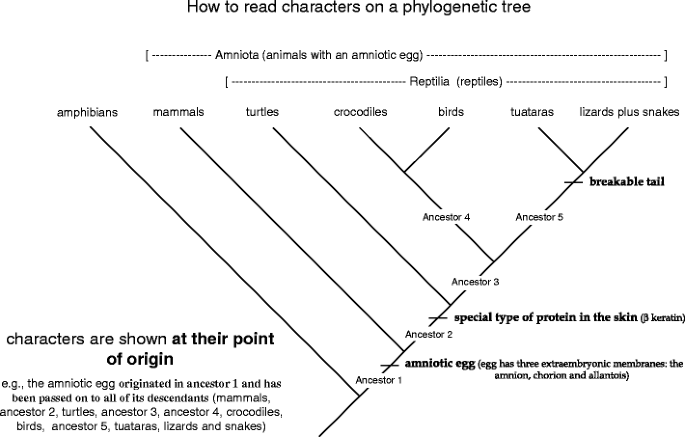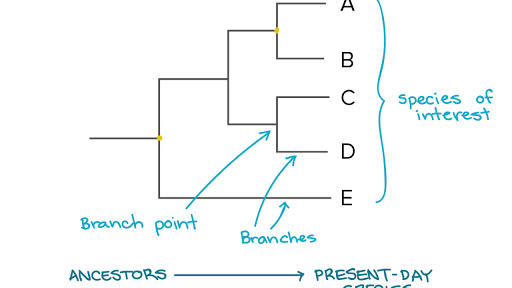How To Read A Phylogenetic Tree With Numbers
Parts of a tree.
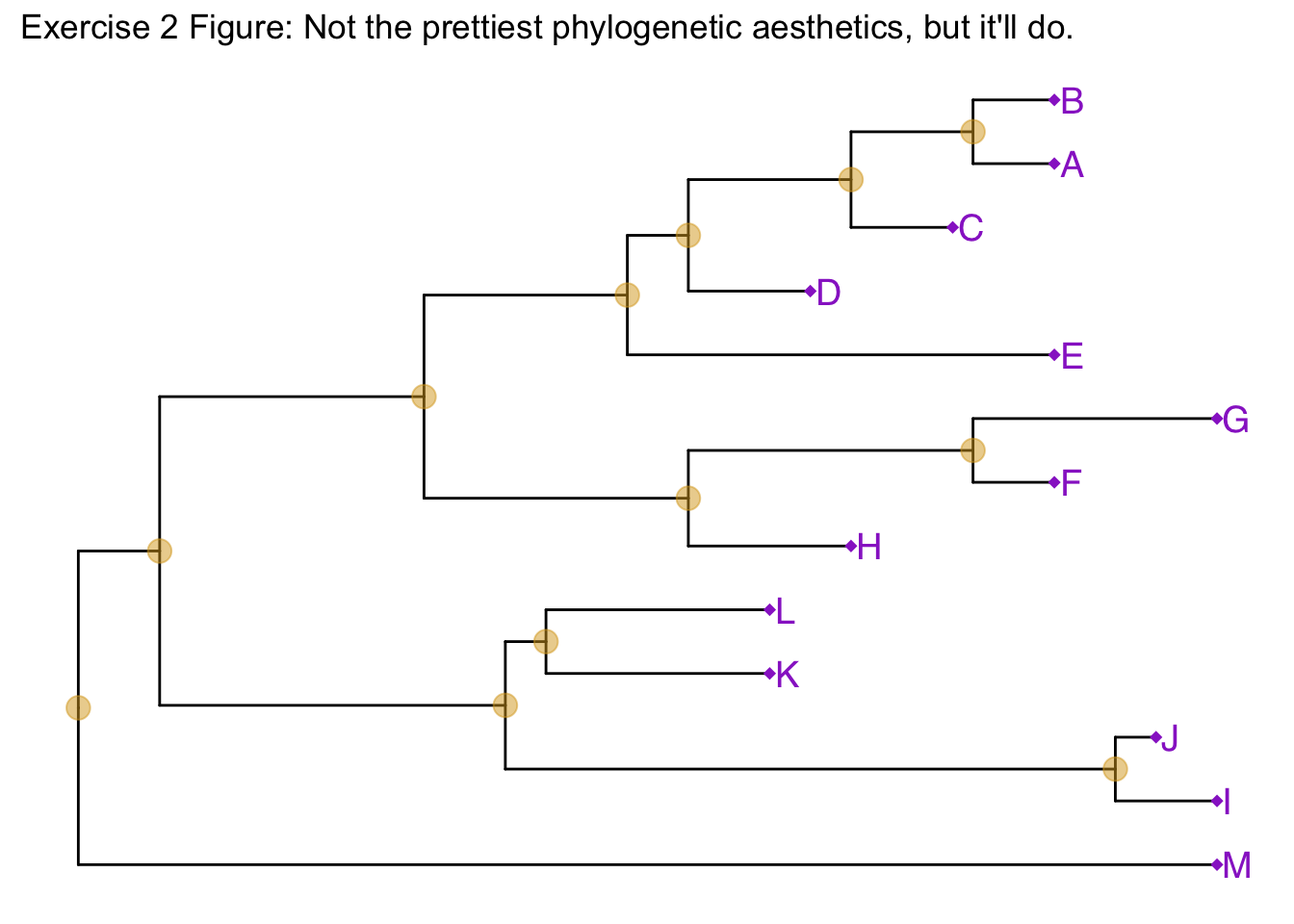
How to read a phylogenetic tree with numbers. As you move from the root to the tips you are moving forward in time. It represents the phylogenetic confidence of the the tree topology. Branches meet at points called nodes that represent the common ancestor of the two taxa. The number above the nodes indicate bootstrap value.
A phylogenetic tree is a branching diagram showing the evolution of closely related species from their ancestor. The tips of the tree represent groups of descendent taxa often species and the nodes on the tree represent the common ancestors of those descendants. To read a phylogenetic tree like the one in the following figure look for this information. A common mistake is to read the tips of the trees and think their order has meaning.
In the tree above the closest relative to taxon c is not taxon b. Both a and b are equally distant from or related to taxon c. The root of the tree represents the common ancestor of several closely related species. These are generally numbers between 0 and 1 but may be given as percentages where 1 represents maximal support.
The numbers next to each node in red above represent a measure of support for the node. Trees can be confusing to read. It is composed of lines and branches. The root of the tree represents the ancestral lineage and the tips of the branches represent the descendants of that ancestor.
What a phylogenetic tree is. Misconceptions and how to correctly read a phylogenetic tree. How to read a phylogenetic tree. Alternatively some phylogenetic trees depict relationships among individuals within a species eg from geographically.
I have a phlyogenetic tree see attachment. How to read a phylogenetic tree. A line shows the. When a lineage splits speciation it is represented as branching on a phylogeny.
If youre seeing this message it means were having trouble loading external resources on our website. Normally bootstrap value above 70 is considered a plausible score for branch. A phylogeny or evolutionary tree represents the evolutionary relationships among a set of organisms or groups of organisms called taxa singular. What a phylogenetic tree is.
In the legend it is written that the distance scale represents the number of differences between the sequences. How to read phylogenetic trees and determine which species are most related. Scientists call groups that. How to read phylogenetic trees and determine which species are most related.
These can be computed by a range of statistical approaches including bootstrapping and bayesian posterior probabilities.


